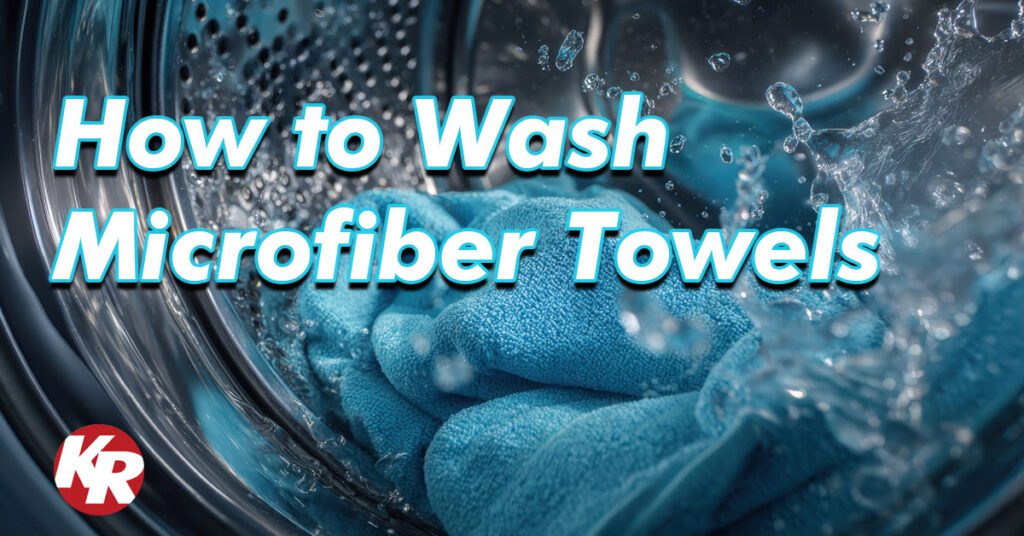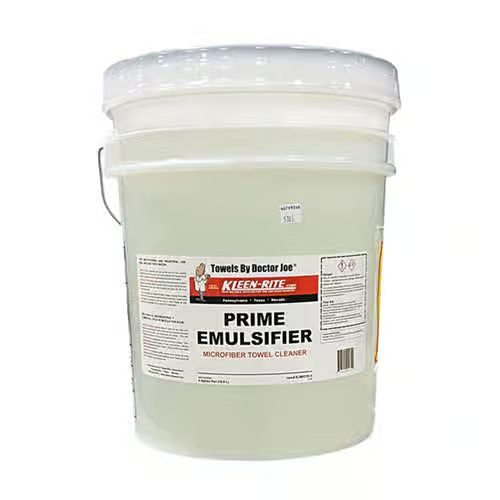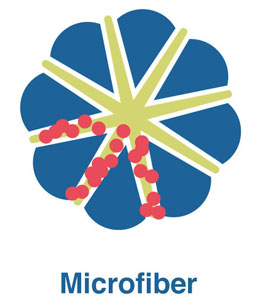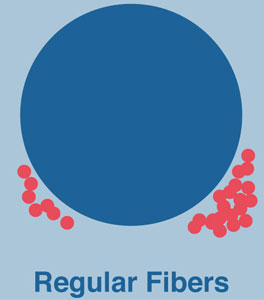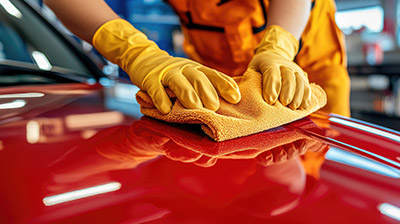Microfiber towels are ever present at detailing shops and car washes. These lightweight towels are extremely absorbent and quick to dry, making them the ideal choice for wiping down a vehicle. As these towels are used repeatedly, keeping them clean becomes an important task. In general, understanding how to wash microfiber towels will help you get the most effective results over the long haul. The following is a helpful how-to for washing microfiber towels. Also discussed are useful care tips and tricks to keep your towels in the best shape possible!
Steps for Machine Washing Microfiber Towels
If using a machine to wash your used microfiber towels, this breakdown will ensure you get the most effective results. Before the washing itself though, it’s important to sort and separate towels appropriately.
Tips for Sorting Microfiber Towels:
- The purpose of sorting your microfiber towels before washing them is to ensure the most effective clean possible. Avoid washing microfiber towels in the same load with non-microfiber materials.
- Separate heavily-used from lightly-used microfiber towels. Even though the towels are going to be washed, you don’t want the grime and dirt from heavily-used towels to transfer onto towels which aren’t as dirty.
- Organize your towels by color. This is perhaps the easiest way to ensure your towels are sorted properly. Use certain color microfiber towels for certain tasks, and wash all the same colors in one load. This will expedite the washing process while ensuring there’s no cross-contamination of chemicals.
- Wash microfiber accessories such as mitts and applicators on their own, too. While they also use microfiber material, mitts, applicators, and other accessories require their own washing instructions that typically differ from microfiber towels.
Machine Washing Microfiber Towels
With each type of microfiber towel properly sorted, you can begin the process of machine washing each pile. It’s a pretty simple process, with the only required items being a microfiber-specific detergent such as the Prime Emulsifier Cleaner from Towels by Doctor Joe.
- Begin by shaking off excess dirt which might have accumulated on the towels. This doesn’t need to be a lengthy process- a quick shakedown to remove any loose debris will suffice.
- Place your microfiber towels in the wash along with the detergent. You won’t need much detergent. The Prime Emulsifier Cleaner from Towels by Doctor Joe only recommends 3 ounces of detergent during your first ever wash of the towels, and 2 ounces for every subsequent wash. (While not as effective as emulsifier, you can try washing your towels in vinegar, also. Vinegar helps to eliminate odors but shouldn’t be combined with detergent.)
- The last step involves choosing the right wash setting. You’ll want to be on either a gentle or delicate setting. If the towels are only lightly soiled, you can wash them in cool water. If they’re heavily dirtied however, choose warm water for the wash.
The Importance of Proper Detergent
Having a detergent on hand such as the Prime Emulsifier Cleaner noticeably upgrades not just the washing process, but the overall care of your microfiber towels. This is because the cleaner is designed to maintain the towel’s effectiveness as much as it is to deliver a strong clean. When used regularly, the cleaner opens the pores of the towel fibers, creating more water retention during each use, while also releasing more oil, dirt, and grease during each wash. By comparison, using something like fabric softener or bleach can clog the fibers or cause damage, resulting in less adsorption and generally less effectiveness.
Microfiber Towel vs Wash Mitt
Why is it so important to separate wash mitts from a load of microfiber towels? Despite using the same material construction, the shaping and sizing of a mitt can make it trickier to fully wash. Debris is more likely to get lodged into a mitt, necessitating a different washing experience than that of a towel. Also, cross-contamination can become an issue. This is notable if you’re using the towels for a different purpose than the mitts are being used for.
Steps for Hand Washing Microfiber Towels
The alternative to washing your microfiber towels in a machine is to go the hand washing route. One process isn’t necessarily more effective than the other. Execute the following steps and your microfiber towels will be as clean and effective as when using a machine:
- As with a machine wash, begin by shaking the microfiber towels free of any excess dirt or grime.
- Next up, fill your wash basin with either cool or warm water. Cool water will work best if the microfiber towels are lightly dirtied. Warm water is the preferred choice for towels which are especially dirtied.
- Now it’s time to add the detergent. The Prime Emulsifier Cleaner from Towels by Doctor Joe is once again a stellar choice.
- Introduce the towels into the wash basin and let them soak. It takes a little time for the trapped dirt and debris to come loose. So, expect to soak the towels for anywhere between 15 and 30 minutes.
- Once soaked, you’ll want to agitate the towels to help remove all grime. This also ensures the detergent is working down deep into the pores of the towel.
- After agitating the microfiber towel, rinse it under clean, running water until suds disappear.
- Finally, wring out the towel. This will remove excess water, but be sure not to stretch or twist the towel during this process, as these motions can stretch the microfiber material.
How to Dry Microfiber Towels
Washing is only half the equation when it comes to cleaning and caring for your microfiber towels. There’s also the matter of drying them, which comes with its own set of guidelines. Drying doesn’t require a ton of time or effort. Microfiber towels naturally dry quite quickly, and are also effective even if they happen to be a bit damp.
You can go about drying your towels in one of two ways- air drying or using a machine. There are a few specifics to know about each method.
Air Drying Your Microfiber Towels- Air drying is the ideal method for drying your microfiber towels. Hanging the towels on a rack, preferably indoors to avoid any potential dust or dirt accumulating on the towels, will help them retain their shape while also helping the fibers retain their adsorbent nature. If you want to add some extra plushness to the towels after air drying, you can briefly run them through a machine for a short tumble on a low-heat setting.
Machine Drying Your Microfiber Towels- If you’re going to use a machine to dry your microfiber towels, the primary thing to avoid is heat. Excess heat can damage the fibers and lessen the effectiveness of the towels. So, be sure to run a low heat or no heat cycle. Ideally, you would run the towels through a commercial washing extractor.
Cleaning the lint trap before drying the towels is another good idea. Additionally, you’ll want to avoid using dryer sheets. The ingredients in the dryer sheet can coat the fibers of the towel and reduce their ability to adsorb and clean. This is the same reason why you would want to avoid using fabric softener and bleach during the washing process.
Caring for Your Microfiber Towels: Longevity and Performance
Properly washing and drying your microfiber towels is vital to their long-term care and upkeep. This is only one part of the equation, however. There are specific tips and habits to remember for storing, folding, and using your microfiber towels as well. If you properly care for your towels from the moment you first get them, you can expect a lifespan of hundreds of washes over the course of years.
How Microfiber Works: Absorption vs Adsorption
To best care for your microfiber towels, it’s useful to have a brief understanding of what microfiber is and how it differs from traditional towel textures such as cotton. The more you know, the easier upkeep of your towels becomes long-term.
Microfiber is a synthetic fiber. These fibers are astoundingly small, roughly one hundredth the diameter of a human hair. It’s not just the size which makes this fiber exceptionally effective, but its uniquely designed structure using both polyester and polyamide. The result is a fiber which is both positively and negatively charged, allowing it to cling to dirt or debris more effectively.
Each tiny fiber helps lift dirt off the surface of whatever it is you’re wiping. It’s adsorption at its finest. So, what is adsorption? And how does it differ from absorption? Here’s the easiest breakdown:
- Absorption- when a substance enters the bulk of the interior of a material. For example, cotton towels absorb.
- Adsorption- When a substance accumulates only on the surface of a material. For example, microfiber towels adsorb.
Adsorption is the key to microfiber towels success. They create a large surface area relative to their size, and using adsorption, they’re able to effectively attract substances which can then be easily washed off.
How Long Do Microfiber Towels Last?
As with any product at your wash, you want to get as much quality usage from your microfiber towels as possible. While the lifespan of a towel may vary, you can expect to get hundreds of washes out of it, with the highest quality towels exceeding 500 washes. It’s the care and attention to details which is going to help you maximize your towel’s lifespan and performance.
The following care tips are a surefire way to extend a towel’s effectiveness. Before diving into those sections however, here are common signs suggesting your microfiber towels are beginning to wear down:
- Moisture Adsorption- Any drop off in your towel’s ability to adsorb moisture is a clear sign it’s beginning to wear down.
- Smearing/Scratching/Streaking- If your towel is beginning to leave unsightly marks on the surface of a vehicle, it’s time to find a replacement towel.
- Deterioration- Oftentimes you can identify when a towel has worn down simply by looking at it or touching it. Frayed edges, holes, or a noticeable change in the texture of the towel are all indications the towel should be replaced.
- Debris Buildup- While a microfiber towel is supposed to adsorb and accumulate debris or dirt, excessive debris remaining on the towel likely indicates the towel itself is wearing down. If you happen to expose your towel to a lot of sand or small sediments, it’s possible these sediments will lodge in the towel surface and diminish overall effectiveness.
Care Tips for Express Washes
Microfiber towels are a common sight at express washes. The inherent strengths of these towels make them highly effective when drying vehicles, which in turn helps move vehicles through a wash more quickly. So, what else beyond proper washing and drying techniques can you employ to get the most usage from these towels?
Storage is the first consideration which comes to mind. How and where you store your microfiber towels can influence their quality and general wear and tear over time. A good rule of thumb for storage is to keep the towels in a dust-free environment. Examples of this would include lidded plastic storage bins, stackable drawers, or cloth storage bags. Before storing them, it’s vital the towels are completely dry. Storing damp or wet microfiber towels can lead to mold or mildew. Additionally, if you don’t use the microfiber towels often, consider an airtight container to keep out any dust or pests.
Another consideration worth making relates to the labeling of your towels. Ideally, you want to avoid mixing towels which might be used for different purposes. Storing a towel away which is covered or has been exposed to certain chemicals alongside towels which haven’t been exposed to this chemical introduces the possibility of cross-contamination. As mentioned, the easiest way to sort towels for proper storage is by color.
Care Tips for Detailing Professionals
There are some specific things to keep an eye out for when trying to get the most usage out of microfiber towels at a detailing shop. Storage considerations need to be made, just as they would at an express wash. A dry, dust-free, and air-sealed arrangement is best. Even more important for a detailing shop than an express wash though, is the separation of towels that have been used for different purposes.
Given the many unique types of chemicals, polishes, sprays, or waxes used at a detailing shop, you’ll want to set aside and designate certain towels for use with certain chemicals. Then, when you wash these towels or store them, you’ll know exactly which towel should be used for which purpose moving forward.
Properly Folding Your Microfiber Towel
An often overlooked yet important part of long-term microfiber towel care is proper folding. Folding comes into play in numerous ways, including folding techniques for properly utilizing the towel and folding techniques for storage. Correctly folding your towels will help you get the most from their performance, while also allowing them to hold up better to long-term wear and tear.
For Detailing and Cleaning- The Eight-Fold Method
The reason to properly fold your microfiber towel is to get the most use and the most effective use from the drying experience. The eight-fold method is an ideal option for this specific goal. Essentially, the eight-fold method provides you with eight clean surfaces of the towel to use, preventing the spread of dirt and helping you extract the most performance from each towel. Use this method for detailing and cleaning purposes. The technique is straightforward:
- Begin by laying the towel on a flat, dry surface.
- Lengthwise, fold the towel in half.
- Fold the towel once more in a similar fashion, creating a long, rectangular strip.
- From there, fold it in half to create a square.
- Once completed, use both exposed sides until each is dirty.
- Open the towel and refold it to expose the clean sides.
- Fold and expose until eight sides have been used.
For General Use- Quarter-Fold
The quarter-fold technique is a quick and easy option. Use this fold for general purposes as opposed to specific, extensive detailing jobs.
- Lay towel on flat, clean surface
- Fold lengthwise
- Fold the towel width wise to create a small, thick square
For Storage and Travel- Rolling Method
To maximize space when storing your microfiber towels or when traveling, you can consider the rolling method technique. This option will allow you to easily fit multiple towels into a drawer, basket, suitcase, or container.
- Lay the towel flat
- Fold in half lengthwise
- Beginning at one end, roll the towel tightly
- If possible, you can tuck the remaining flap into the roll to secure it
Cleaning Microfiber Towels FAQS
Do I Need a Special Detergent?
The purpose of using a special detergent such as the Towels by Doctor Joe Prime Emulsifier is mainly preservation. Using the wrong detergent can hamper absorbency or create residues capable of harming a car’s finish.
Should I Use Fabric Softener?
Avoid fabric softener when washing your microfiber towels. Generic fabric softener, as well as standard drying accessories like dryer sheets, can damage the structure of the microfiber towel and lessen their effectiveness.
Can I Wash Microfiber Towels with Vinegar?
Vinegar can be beneficial to microfiber towels when washing them. The vinegar can help remove odors, dirt, and residue. However, don’t mix the vinegar with the detergent.
Can I Wash Microfiber Towels with Dawn Dish Soap?
You should not wash microfiber towels with dawn soap. Using a dedicated microfiber detergent is always the preferred option. A proper emulsifier will keep your microfiber towels plush and effective.
About the Author

Joe Gartland (Dr. Joe)
Kleen-Rite Consultant, Towels by Dr. Joe, Towel Expert
Owner of Towels by Dr. Joe for over 30 years now, few know the ins and outs of microfiber towels like Joe Gartland. Extensive time spent in the car wash and detailing industries has afforded Joe robust knowledge of towels, their ideal applications, and the differing materials which make them most effective. As a premier towel supplier, his microfiber and cotton towels are also used in salons, spas, hotels, shops, and more.
Joe, along with his Towels by Dr. Joe colleague Joe Garber, have for years partnered with Kleen-Rite to provide car wash owners and detailing professionals with high-quality products.

